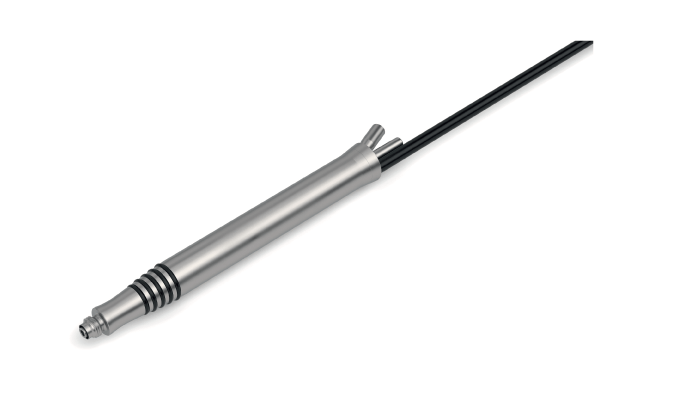
Modern cataract surgery places a number of demands on surgeons. To save the endothelium, as little ultrasound energy as possible should be used. At the same time, a stable anterior chamber is needed during the procedure and all nuclei must be treatable with one surgery platform. On top of these requirements, patient demands are also growing; it is now more important than ever for patients to have clear corneas post-operation.
Key to meeting these demands are the physics and fluidics of different pump systems. Generally speaking, there are two established types of pump system used for vitreoretinal and cataract surgery. The peristaltic pump is flow-based and, though it can be finely tuned, we can only build up the vacuum by occlusion up to the preset limit. The Venturi pump system on the other hand is vacuum-based. The vacuum is built up quickly and is adjustable, but the flow is not directly controllable.
Oertli’s SPEEP pump combines these two pump systems to give you the best of both worlds: full fluidics control and unsurpassed precision in your modern cataract and vitreoretinal surgeries. This dynamic tool offers controlled holding power, high efficiency, and precise flow control – enabling perfect work in the anterior and posterior segments of the eye.
So how does it work? In the SPEEP pump setting, flow and vacuum can be controlled at the same time. It has a flow of up to 60 ml/min and a vacuum up to 650 mmHg, which are precisely dosed so you can control via foot pedal or by presetting the machine. Notably, this is something that is not possible with a peristaltic or Venturi system only. The result? High speed and efficacy – at the same time – which, speaking from experience, makes it a great tool for any modern cataract surgeon.
You may already be familiar with this technology for vitreoretinal surgery; the reason why this system can be used across both procedures is because the demands are somewhat similar. Both surgeries require safety, efficiency, and high precision. SPEEP pump allows a surgeon to get very close to simple structures, gives precise control in every situation, and allows fast aspiration in microincision cataract surgery.
To really reap the rewards of this tool, I recommend using it in combination with easyPhaco technology, which offers extremely stable phacoemulsification as well as efficient (and immediate) fragment aspiration. The unique design of the easyTip uses a focused axial output of ultrasound energy to ensure targeted emulsification directly into the lens fragment. By absorbing ultrasound energy within the core material at the top of the tip, it also applies as little ultrasound as possible to the eye and helps save the endothelium. The architecture of the easyTip also provides surgeons with a stable anterior chamber, while direct and precise followability and strong holdability helps achieve clear corneas post-op. Additionally, all nuclei can be treated using easyPhaco technology.
I use the CO-MICS tip for 1.6 mm incisions in my surgeries with great results, but they are available in sizes up to 3.2 mm. I have used the technology in some of my more complicated cases, including cases of trauma, and have found it leads to safer, more efficient and precise surgery for my patients. In summary, Oertli’s easyPhaco technology and SPEEP pump both use fluidics based on physics to ensure successful modern cataract surgery.

